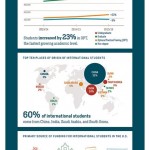MEXICO CITY (AP) _ Mexicans received their first chance Friday to see three pre-Hispanic stone carvings that were returned by the Lowe Art museum in Miami after they were apparently removed illegally from Mexico.
Mexico’s National Institute of Anthropology and History says the three stone pieces depict a serpent, a water god and a priest or nobleman.
While it is hard to say what culture or ruin site they came from, the institute said Friday that experts will study them to try to determine more details.
“The Lowe museum contributed its part in this return, with a constructive spirit, by corroborating evidence that suggested the pieces were illegally removed from Mexican territory,” the institute said in a statement.
The carvings were returned to Mexico in August. Institute authorities presented them to the public at a news conference on Friday.
One depicting a richly-attired male personage probably dates from between 200 B.C. and 200 A.D.
Another carving depicts the water god Tlaloc and dates to between 700 and 900 A.D. The third, a carving of a serpent’s head, dates to between 900 and 1,200 A.D.
The institute said the pieces were linked to Costa Rican dealer Leonardo Patterson, who built a reputation over the course of decades _ and across several continents _ for trading and displaying artifacts of dubious provenance.
777777777777777777777777777777777777777777777777777777777
Hispanic-owned businesses double from 2002 to 2013
NEW YORK (AP) _ The number of Hispanic-owned businesses in the U.S. is expected to nearly double this year from 2002.
That’s the finding of a study released Friday by the U.S. Hispanic Chamber of Commerce and Geoscape, a company that provides demographics data. The study, which analyzes U.S. census data and other information, projects there will be nearly 3.2 million Hispanic-owned businesses in the country in 2013, up from nearly 1.7 million in 2002.
The study also forecasts that the number of Hispanic-owned businesses in what it calls the South Atlantic region _ Maryland, Virginia, West Virginia, the Carolinas, Georgia and Florida _ will surpass the number in the Pacific region, which includes the West Coast and Alaska and Hawaii.
The study projects that there will be more than 866,000 Hispanic-owned businesses in the South Atlantic this year, compared with nearly 796,000 in the Pacific.
The surge in Hispanic-owned businesses reflects the rapid growth of the Hispanic population. The number of Hispanics counted in the U.S. census in 2012 rose 2.2 percent from 2011 to 53 million.









